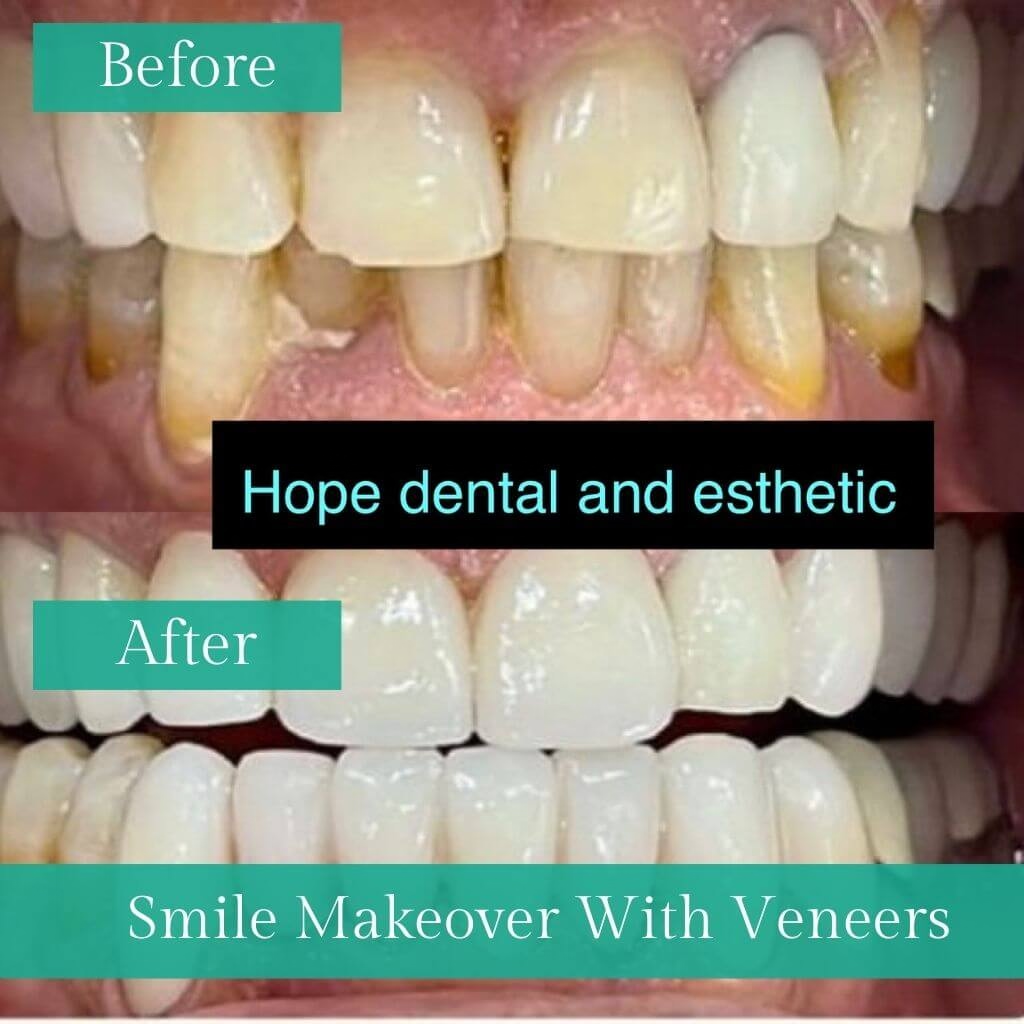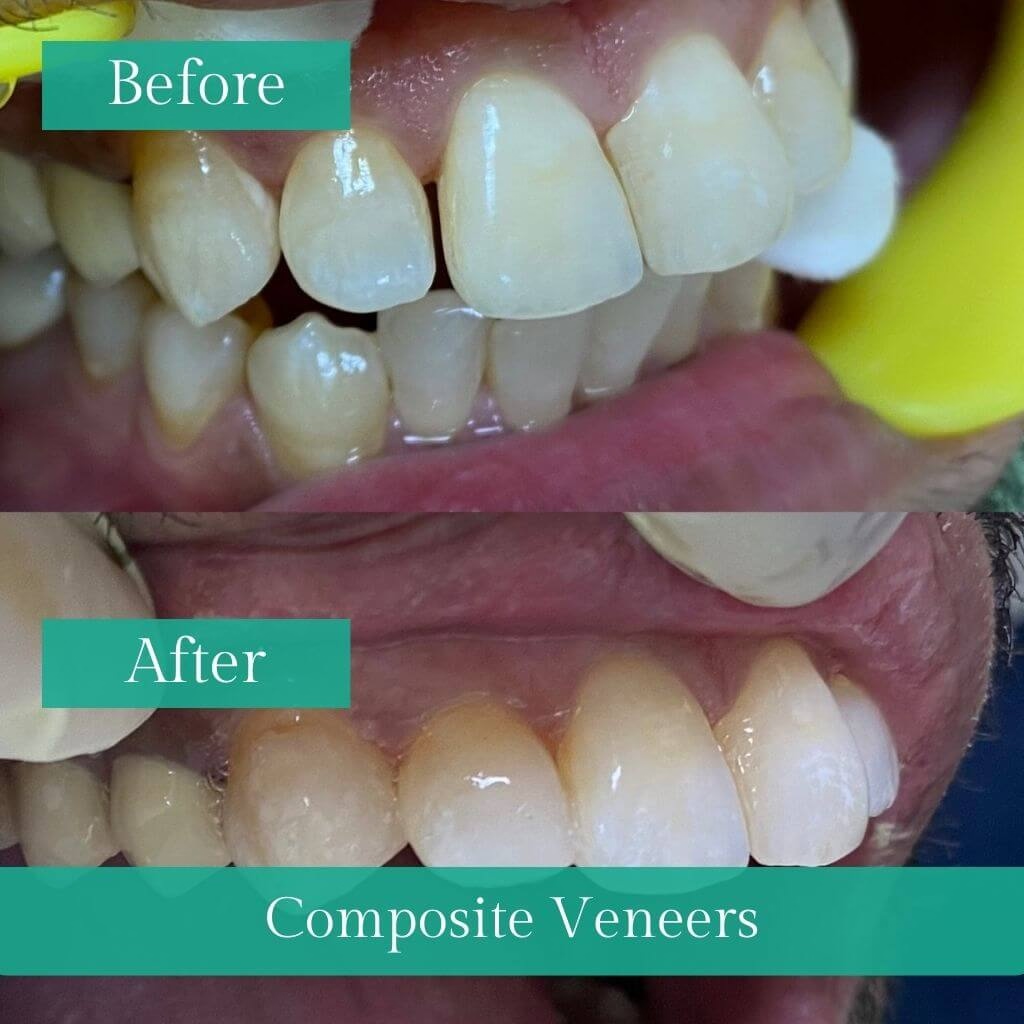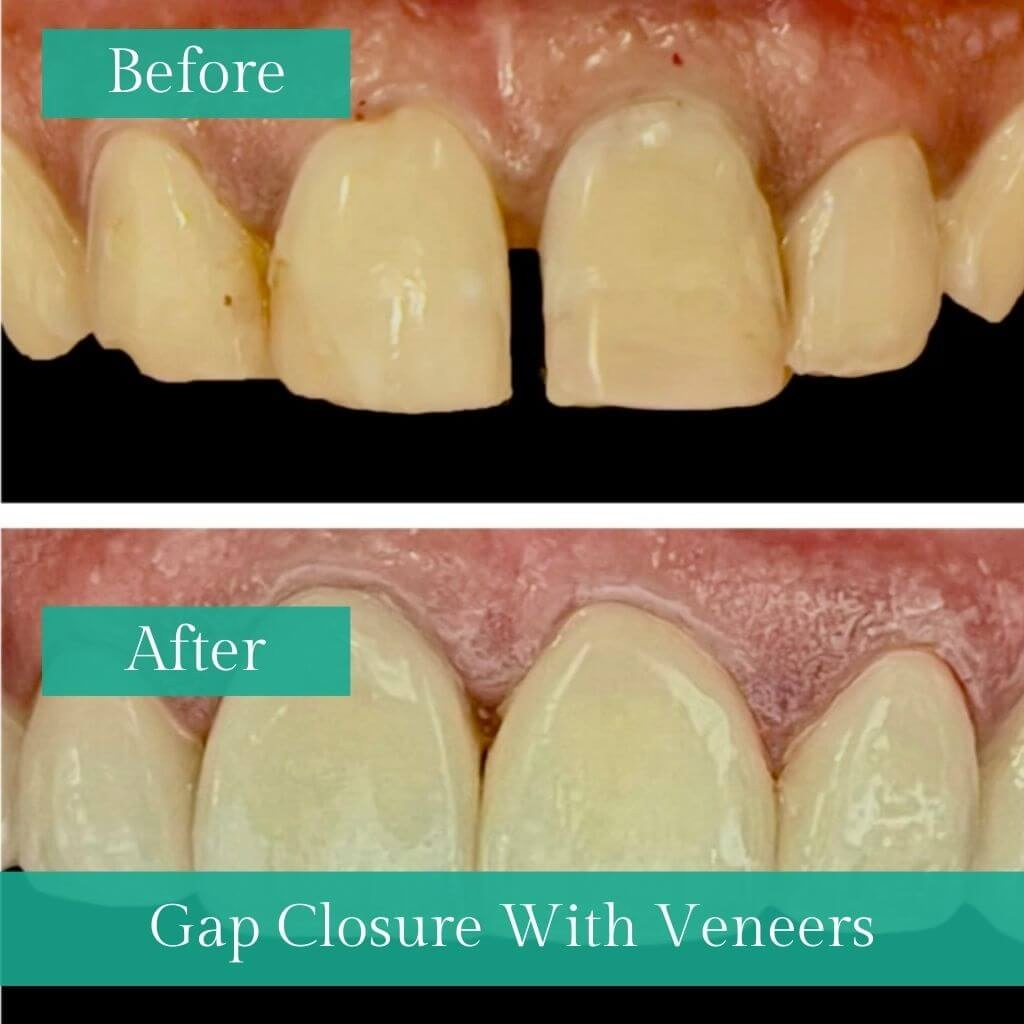What are Dental veneers?
Veneers constitute a cosmetic dental solution involving custom-made, thin shells crafted from high-quality dental materials such as porcelain or composite resin. These shells are meticulously designed to fit over the front surfaces of teeth, effectively enhancing their appearance. Veneers address various cosmetic dental issues by concealing a diverse range of aesthetic concerns, including chips, cracks, gaps, discolouration, and more.
Types of Dental Veneers
Porcelain Veneers
Crafted from high-quality porcelain material, these veneers offer a natural, translucent appearance similar to natural teeth. They are stain-resistant and highly durable, making them a long-lasting option for enhancing dental aesthetics.
Composite Veneers
Made from tooth-coloured composite resin material, these veneers are directly applied to the teeth and sculpted by the dentist. Though they may require frequent maintenance and replacement, they provide a more cost-effective solution than porcelain veneers.
Removable Veneers
These are made from a specialised material and can be easily removed. They provide a non-permanent option for enhancing the appearance of teeth.
Who needs Dental Veneers?
Dental veneers are a versatile cosmetic solution recommended for individuals with various dental concerns to enhance their smile's aesthetics and overall appearance. Those who might benefit from dental veneers include
Chipped or Cracked Teeth
Individuals with chipped, cracked, or fractured teeth can restore their teeth's natural appearance and function using veneers.
Discoloured or Stained Teeth
Veneers mask intrinsic or stubborn discolouration that may not respond well to traditional teeth whitening methods.
Uneven or Misaligned Teeth
Veneers can provide the appearance of straighter teeth without undergoing extensive orthodontic treatment.
Gaps or Spaces Between Teeth
Veneers can effectively close minor gaps or spaces between teeth, creating a more uniform smile.
Worn Down Teeth
Teeth that have been excessively worn down due to grinding or erosion can be rejuvenated with veneers, restoring their original shape and size.
Procedure of Veneers
1. Developing the Treatment Plan
The first step is creating a comprehensive treatment plan that outlines the procedure and the associated costs.
2. Tooth Preparation
Before placing the veneers, the dentist carefully prepares the tooth surfaces by removing a small amount of enamel. This is done under local anaesthesia to ensure comfort.
3.Impressions
After tooth preparation, detailed impressions of your teeth are taken. These impressions create personalised veneers that fit perfectly with your dental contours.
4. Temporary Veneers
While your custom veneers are being made, temporary veneers are applied to protect your teeth and reduce sensitivity.
5. Bonding
Once your custom veneers are ready, they are checked for fit and colour. When you and the dentist are satisfied, the veneers are securely bonded to your teeth using a special dental adhesive.
Final Adjustments
Once the bonding is complete, the dentist might perform final tweaks to guarantee an impeccable fit and a natural look. This meticulous focus on details elevates the alignment and the overall aesthetic of the veneers.
Benefits of Veneers
- Improved appearance and aesthetics of teeth
- Corrects crooked or misaligned teeth
- Covers stains, discolouration, and chips in teeth
- Enhances the shape and size of teeth
- Boosts self-confidence and self-esteem
Aftercare tips
- Ensure proper oral hygiene by consistently brushing and flossing your teeth.
- Refrain from biting or chewing on rigid items or firm foods that might potentially cause harm to the veneers.
- Schedule and attend regular dental check-ups and cleanings to ensure the veneers are properly maintained.
- Use a mouthguard while playing sports or engaging in activities that could potentially cause dental trauma.
- Avoid staining substances such as coffee, tea, and tobacco to keep the veneers looking their best.





